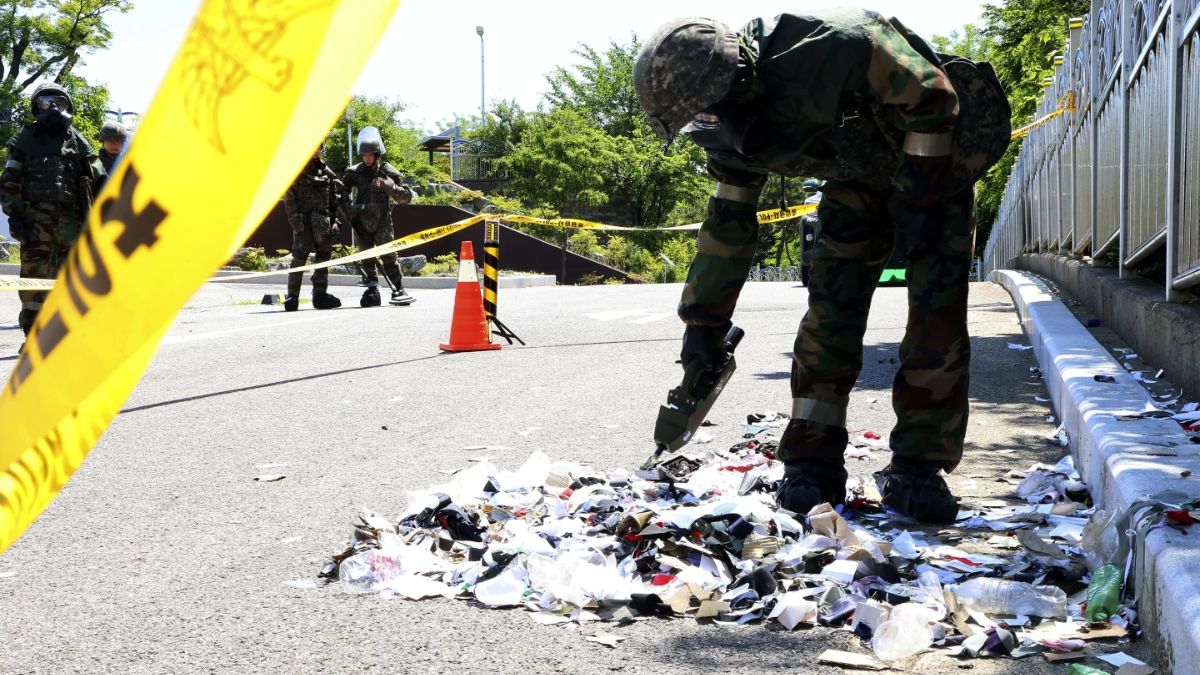North Korea’s decision to launch trash balloons into South Korea had caused tensions to rise between the two countries.
But that’s not all. It’s now been found that these trash balloons also forced South Korea to shut down its runways in Seoul.
Since May, North Korea has been sending bags full of trash across the border repeatedly. This has led to some of the runways at the two main airports of the national capital to shut down due.
There have been 20 days as of now since June 1 when some or even all of the runways were closed for either take off, landing or both, informed Democratic Party member of parliament Yang Bu-nam said in a statement.
Why is North Korea sending trash balloons?
North Korea has undertaken a campaign of sending bags full of trash across the border as retaliation to South Korean activists sending K-pop and propaganda leaflets. North Korea has sent more than 5,500 such balloons since late May.
While the balloons are carried by wind, they tend to drop in Seoul and other cities with some landing near the presidential office and on airport runways. Although these balloons are removed by authorities, some burst and end up in a mess in the region.
How do trash balloons affect runways?
According to aviation official data released by Yang’s office, the Incheon airport runways had to be closed for a total of 166 minutes (2 hours, 7 minutes) on June 26. This is the most time that any runway has been shut down.
Takeoffs and landings remained suspended for 90 minutes (1 hour, 30 minutes) at the Incheon Airport, the world’s fifth-busiest international airport and an important cargo hub, on Monday (September 23). The balloons have also disrupted operations at Gimpo, which is on the western edge of the capital Seoul and mostly serves domestic flights.
An airline official said the North Korean balloon campaign had complicated flight operations, in some cases increasing the amount of fuel carried by planes in case of delays in the air or diversions to alternative airports.
An aviation authority official said decisions to close runways were made each time a balloon is detected, factoring in conditions and not based on a specific distance they are from the airport.
What is South Korea’s response?
South Korea’s military said that it takes the balloons ‘very seriously’ and was on alert to take action in response as necessary. Although it did not elaborate on the actions it would take.
South Korea has warned it would take ‘unendurable’ measures against the North for sending the trash balloons, which could include blaring propaganda broadcasts from huge loudspeakers set up at the border directed at the North.
What happened earlier?
North Korea had earlier temporarily halted sending the balloons. However, it vowed to resume if leaflets were again flown from the South by sending hundred times the amount.
Meanwhile, a group of South Korean activists defied the warning and have since sent leaflets criticising North’s leader Kim Jong Un together with USB sticks containing K-pop videos and dramas, and US dollar notes.
With inputs from Reuters


)

)
)
)
)
)
)
)
)



